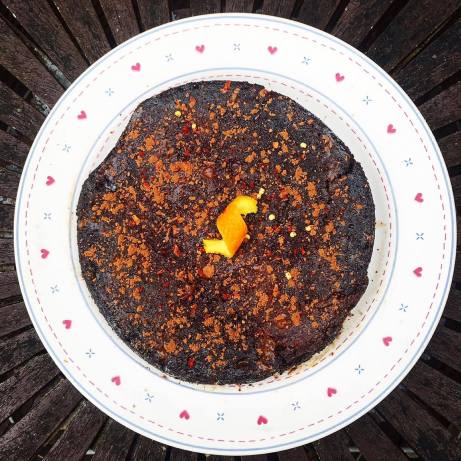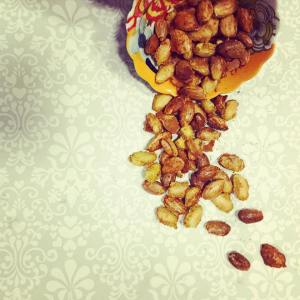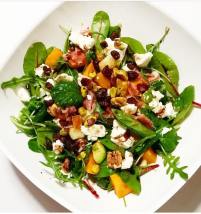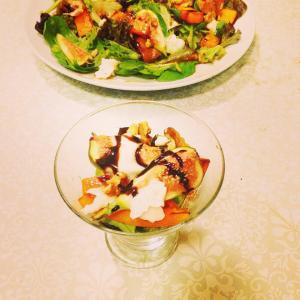
This week, I went to a really thought provoking talk about breast feeding. I know it sounds odd, I wasn’t expecting to be interested either. But this very impressive researcher’s work shows that women who have poor body image and disordered eating tend to overfeed their new born babies. The more conscious you are of your own body and eating behaviours, the less likely you are to let your baby listen to their natural hunger signals and force them to eat more than they actually need.
At this period of our lives, our brains are more impressionable than ever. The first two years of life are where huge chunks of our personality and behaviours are determined, so the way our mothers interact with us during this time will shape our relationship with food for the rest of our lives. Many people don’t realise that overfeeding their babies is likely to disconnect children from their instincts, potentially causing irreversible damage to their ability to self-regulate food intake.
In a similar vein, The Guardian wrote an interesting article only children below the age of four possess the ability to stop eating when they’re full. That feeling when you’re stuffed from a big Chinese takeaway but you just keep on picking, or when you still crave chocolate after a huge roast? That behaviour is not innate; it’s a learned emotional response to food. We use food to make use feel happier or calmer, because being full allows us to ignore negative feelings.
It seems like there is a critical window of development in early life where babies use their internal signals to know when, how much and what to eat. Without social influence, we would continue to rely on these hunger signals to guide our eating behaviours across our entire lives.
If that mechanism stayed in place throughout adult hood, I assume that there would be a lot less people over eating and obesity probably wouldn’t be the global epidemic that it is. However, with the influence of an anxious mother who insists that her child eat drink more milk that it actually wants, or early consumption of sugary, processed baby foods, kids quickly learn to ignore their own bodies and eat how society dictates. The extent to which a child listens to their hunger signals will either strengthen or weaken the neural pathways that tell the brain when we feel hungry and full.
As the very wise Meri Leston explains, the things we say to children wil have an effect of them for the rest of their lives. When it comes to body image, the seeds of self-doubt can be planted all too easily.
‘Why is it that we can’t stop describing little girls pretty or little boys as strong. That’s just going to set them up for an expectation of disappointment ‘- Merri Leston, TED x Oxford.

It’s so important that we realise just how sensitive children are to the influence of adults, and how readily their eating behaviours can adapt. By encouraging kids to tap into their own natural hunger signals, we could hopefully prevent another generation of emotional eaters. Of course, in a time where body image issues are at their highest, and our relationships with food are more complex than ever, change feels impossible. But it starts with understanding why we’ve developed this maladaptive relationship in order to become aware of how we can stop from passing this down to future generations.
This week is a rich and wonderful cake which is made with a secret ingredient – aubergine. Don’t be put off, it still tastes chocolatey and sweet, the aubergine replaces flour making it gluten free and high in anti-oxidants, enjoy!

Chilli and orange, aubergine chocolate cake:
Ingredients
2 aubergines
300g 70% dark chocolate
50g cocoa powder
2 tsp baking powder
60g ground almonds
3 eggs
200g honey
1 orange (juice and zest)
1 teaspoon chilli flakes
- Cook the aubergines in a microwave for 8mins, until soft.
- Scoop out the insides and puree the aubergine in a blender or food processor.
-
Add the chocolate, which will melt in with the aubergine.
-
Mix all the other ingredients in a bowl.
-
Fold the melted chocolate and aubergine mixture with all the other ingredients.
-
Grease a cake tin and pour the mixture in evenly.
-
Bake in the oven for 30 minutes (make sure you check if it’s cooked through, if not give it another 5-10 minutes).
-
Remove the cake from the oven and let it cool.
-
Sieve cocoa powder an chilli flakes over the top of the cake to garnish. You can also cut some of the orange peel and twist it for a pretty orange swirl.




 No-bake Blackberry and lemon tarts:
No-bake Blackberry and lemon tarts:
















